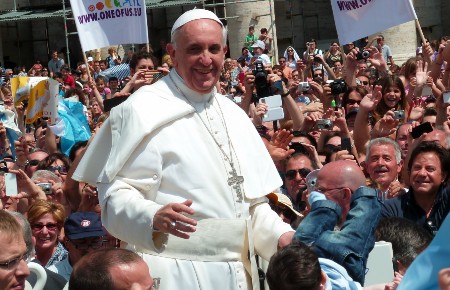 Hi readers, it seems you use Catholic Online a lot; that's great! It's a little awkward to ask, but we need your help. If you have already donated, we sincerely thank you. We're not salespeople, but we depend on donations averaging $14.76 and fewer than 1% of readers give. If you donate just $5.00, the price of your coffee, Catholic Online School could keep thriving. Thank you. Help Now >
Hi readers, it seems you use Catholic Online a lot; that's great! It's a little awkward to ask, but we need your help. If you have already donated, we sincerely thank you. We're not salespeople, but we depend on donations averaging $14.76 and fewer than 1% of readers give. If you donate just $5.00, the price of your coffee, Catholic Online School could keep thriving. Thank you. Help Now >
Stephen Lochner
FREE Catholic Classes
A painter, born at Meersburg, on the Lake of Constance, date of birth unknown; died at Cologne, 1452. He came to Cologne about 1430 from Meersburg. His style of painting resembles more that of "Master Wilhelm" of the fourteenth century, than that of the unknown painters who followed him, who, though they lived at Cologne, betray a certain Dutch influence. He seems to have brought with him from his home in Upper Germany, the more vivid realism of Moser and Witz. His principal work was destined for the altar in the town hall, but was removed in 1810 to the choir chapel of the cathedral. This is the brilliant triptych which, in the centre piece, shows in almost life-size figures the worshipping of the Magi, and the side panels of which represent St. Ursula with her companions, and Gereon with his warriors. In the middle, seated on a throne, appears the Madonna with the Child, humble and yet majestic, clad in the traditional ideal garments. The miraculous star shines above, and angels appear overhead. On each side one of the kings prays and tenders his offering, while the third stands beside the throne. To the right and the left their followers crowd into view. A wealth of tone and colour transfigures the scene. The figures, save the Virgin, are all clad in the costumes of the time ; their bearing is free and bold, and each individual in the group stands out in marked relief. This is especially true of the warriors of Gereon on the right lateral panel. Their leader is seen, virile and resolute, advancing with the flag; his costume is richly embroidered, and his armour bears a large cross. His followers are similarly clad and bear battle-axes. On the left side are the women, of delicate mould and somewhat less pronounced individuality ; a pope and a bishop appear among them, both of whom play a part in the legend of St. Ursula. The sumptuous garments of the maidens are trimmed with royal ermine, and their long flowing sleeves hang down at their sides. The slender arms and tapering fingers of the Madonna, as well as the somewhat awkward movements of some of the other figures, remind us of an earlier period; but there is a keen sense of nature and an earnest aim at reality in the treatment of the costumes as well as in the expression of the faces, which are finished and lifelike.
The Annunciation, done in more subdued tones, is represented at the outer end. Great care is shown in the handling of the room, with its wall-hangings and its compartment ceilings, the desk, chair, and lily. The whole work reminds one of Van Eyck's altar painting at Ghent ; the artist has achieved at Cologne a magnificent monument to the patron saint of the city. Similar in technic is the "Virgin among the Rosebushes" (Maria am Rosenhag) in the Cologne museum. This is an enchanting picture of the Blessed Mother with the Child, surrounded by angels who discourse celestial music. Indeed one might view it as a scene in heaven, a glimpse of which is vouchsafed mortals by the two angels who part the mystic veil. God the Father appears above, His hand raised in benediction, while over them hovers the Dove, symbol of the Holy Ghost. The "Madonna of the Violets" is ascribed to an earlier period of Lochner, and is in the archiepiscopal museum. This charming work is done in the style of "Master Wilhelm". The youthful Mother stands there, more than life-size, with the Infant Jesus on her arm; her left hand holds a bunch of violets; above are seen the Heavenly Father, the Holy Ghost, and an angel ; Mother and Child look down upon a woman in prayer, who represents the donor of the painting. The "Last Judgment", which hangs in the museum of Cologne, seems at first glance to be in an entirely different style. Certain experts have contended against Master Stephan's authorship of this work, because of the realistic forms of the damned, and the distorted faces of the demons. Other critics have assumed that his pupils contributed the lost souls, and have recognized in the remainder of the work the hand of Lochner himself. Another painting, which is more likely to have emanated from his brush, is of "The Presentation of Jesus in the Temple ", with saints portrayed on the side panels; it is the famous central picture at Darmstadt, so much admired by visitors. The youths standing before Simeon, and the maidens grouped behind Anna, make an array of figures full of grace and charm.









 Daily Readings for Friday, April 26, 2024
Daily Readings for Friday, April 26, 2024 St. Cletus: Saint of the Day for Friday, April 26, 2024
St. Cletus: Saint of the Day for Friday, April 26, 2024 Prayer before the Closing of the Day: Prayer of the Day for Friday, April 26, 2024
Prayer before the Closing of the Day: Prayer of the Day for Friday, April 26, 2024
